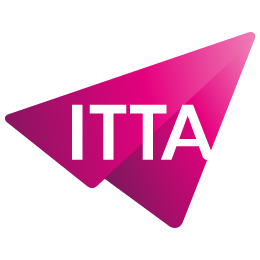Home > Trainings > Development > Object Oriented Programming > UML Foundation
The Unified Modeling Language, or UML, has become an essential standard in the field of software development. It provides a clear way to represent the structure and behavior of a system, while also improving communication between business and technical teams. Taking a UML training course helps participants better understand and document project requirements, from analysis through to design. This course follows a progressive and structured approach, combining theory with practical exercises, to ensure real mastery of the key UML diagrams.
Learning is not limited to reading abstract concepts. You will work directly with different types of diagrams, such as use case diagrams, activity diagrams, and sequence diagrams. Each stage is supported by practical case studies that connect theory to real-world situations. This method makes skill acquisition more accessible and sustainable. As a result, you will develop a clear understanding of the importance of modeling within a modern software development lifecycle.
Module 1: Introduction
Module 2: Use Case Diagram
Module 3: Activity Diagram
Module 4: Use Case Description
Module 5: Class Diagram
Module 6: State Diagram – Transitions
Module 7: Sequence Diagram
Lab 1: Develop a Use Case Diagram
Lab 2: Develop an Activity Diagram
Lab 3: Develop a Use Case
Lab 4: Develop a Class Diagram
Lab 5: Develop a State Diagram
Lab 6: Develop a Sequence Diagram
In a context where IT projects are becoming increasingly complex, the ability to clearly represent a system has become essential.
UML, the Unified Modeling Language, stands out as a strategic tool for creating a shared vision among all stakeholders. Its strength
lies in its ability to make abstract concepts explicit. As a result, analysts, developers, and architects share a common language
that reduces ambiguities and enhances overall software quality.
The use of UML goes far beyond simple diagrams. It contributes to better team communication, requirement documentation, and the
development of scalable designs. Whether in an agile or traditional environment, UML remains a cornerstone for translating business
expectations into concrete models. This UML training provides essential skills to work efficiently in development projects.
Many technical tools can seem intimidating at first. UML, despite its rigor, becomes accessible when introduced step by step and
reinforced with practical exercises. This is why the course alternates between theoretical explanations and case studies inspired
by real-world scenarios. The goal is to show how a UML diagram can transform a text-based specification into a clear and structured
visual representation. Participants leave with hands-on experience they can immediately apply to their projects.
A common example is the use case diagram. It represents the relationships between users and systems in a simple, understandable
language. Learning how to construct these diagrams properly helps clarify responsibilities, interactions, and expected scenarios.
This mastery has a direct impact on the quality of communication between business and technical teams.
Each type of UML diagram serves a specific purpose. The activity diagram, for instance, focuses on processes and helps identify
logical sequences. The class diagram defines entities, their properties, and their relationships. Finally, sequence diagrams
illustrate dynamic interactions between components. Together, these visual representations provide a consistent view and make it
easier to anticipate potential issues.
Beyond their descriptive role, these diagrams serve as valuable analysis tools. They help identify inconsistencies, redundancies,
and areas of excessive complexity. For a software architect or project manager, UML becomes a management tool that reduces risks
and helps secure system delivery.
One of UML’s foundations is its strong connection to object-oriented design. Understanding concepts such as classes, inheritance,
or polymorphism is not just an academic exercise. These principles enable the creation of modular, scalable, and maintainable
systems. UML modeling translates these ideas into accessible visual diagrams. It encourages component reuse and simplifies the
integration of new features without having to redesign the entire system.
In practice, this approach reduces maintenance costs and ensures greater solution scalability. UML training therefore dedicates
significant time to these fundamental notions, giving participants a solid grounding in object-oriented design.
Some believe UML is only suited for waterfall projects. However, it fits perfectly within agile methodologies. UML diagrams can be
used as quick communication tools during sprints. They formalize user stories, visualize business processes, and clarify complex
interactions. Incorporating UML into agile practices improves collaboration and ensures technical decisions remain aligned with
business goals.
Additionally, UML contributes to documentation, often overlooked in fast-paced projects. Thanks to its standardized representations,
teams have clear deliverables that evolve with iterations without adding unnecessary overhead.
Why use UML in a software project?
UML allows you to visually model requirements and solutions. It reduces misunderstandings, facilitates communication, and structures design.
Is this UML training suitable for beginners?
Yes, the course introduces concepts step by step. Basic knowledge of object-oriented programming is helpful but not mandatory.
Which tools are used to practice UML?
The training focuses on understanding concepts but also introduces modeling tools. Participants can apply what they learn using
software such as Enterprise Architect or Visual Paradigm.
Is UML still relevant with agile methods?
Yes, UML remains highly relevant. It adapts to agile projects by offering lightweight, effective visual documentation integrated
into user stories and sprints.
Which roles benefit from UML?
Business analysts, software architects, developers, and project managers all use UML to design, document, and communicate more
effectively about software systems.

Nous utilisons des cookies afin de vous garantir une expérience de navigation fluide, agréable et entièrement sécurisée sur notre site. Ces cookies nous permettent d’analyser et d’améliorer nos services en continu, afin de mieux répondre à vos attentes.
Monday to Friday
8:30 AM to 6:00 PM
Tel. 058 307 73 00
ITTA
Route des jeunes 35
1227 Carouge, Suisse
Monday to Friday, from 8:30 am to 06:00 pm.